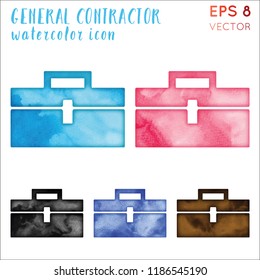Grasping The Vital Distinctions Between Exterior And Interior Paint Can Greatly Affect Your Task. It Is Essential To Familiarize On Your Own With These Distinctions Before You Start Your Job
Grasping The Vital Distinctions Between Exterior And Interior Paint Can Greatly Affect Your Task. It Is Essential To Familiarize On Your Own With These Distinctions Before You Start Your Job
Blog Article
Content Composed By-Pace Schmitt
When you're choosing in between interior and exterior paint, it's essential to recognize their essential differences that influence both performance and aesthetic appeals. Interior paints are crafted for reduced VOC degrees and smoother finishes, making them ideal for indoor areas, while exterior paints are created to withstand severe weather and UV direct exposure. Each kind serves an unique purpose, but understanding when to use one over the other can greatly influence your task's result. So, what factors should you think about when making your option?
Make-up and Formula
When choosing between interior and exterior paint, understanding their make-up and formulation is important. Inside paints commonly consist of a reduced quantity of volatile natural compounds (VOCs), making them much safer for interior air quality. You'll see they often have a smoother surface, which improves their ability to stand up to spots and permits much easier cleansing. They're developed to endure the roughness of interior settings, including differing humidity levels and temperature level changes.
On the other hand, exterior paints are formulated to sustain harsher problems. They generally have greater degrees of pigments and additives to withstand fading from UV rays, as well as to avoid mold and mold and mildew growth. Their make-up includes extra binders and materials, which give far better bond to surfaces exposed to the elements. This ensures the paint can stand up to rain, snow, and varying temperatures without peeling or breaking.
Efficiency and Toughness
Examining efficiency and sturdiness is essential when choosing between exterior and interior paint. Inside paint is designed for surfaces that experience much less wear and tear. It commonly stands up to fading and scuffing, making it perfect for living rooms and bed rooms. Nonetheless, it may not hold up well in high-moisture locations like bathroom and kitchens without appropriate formulation.
On the other hand, exterior paint deals with harsher conditions. It's crafted to stand up to UV rays, rainfall, and temperature changes. This kind of paint typically includes additives that avoid mold and mildew development, guaranteeing longevity in various environments. When you utilize external paint, you can anticipate it to last a number of years longer than indoor paint, supplied it's applied properly.
One more essential distinction hinges on the coating choices. Inside paints often have a selection of finishes for aesthetic allure, while outside paints prioritize toughness over sheen. If you're seeking something that can manage the components, outside paint is your best option.
In contrast, if you're concentrated on interior aesthetics with less issue for severe conditions, indoor paint might be appropriate. Eventually, your selection should straighten with the certain demands of the setting.
Visual Considerations
A fresh layer of paint can change a room, but aesthetic considerations play an essential function in your selection in between interior and exterior alternatives. When you're selecting paint, consider the state of mind you wish to produce. Interior paint permits you to explore a bigger variety of shades and finishes, enabling you to reveal your personal style and improve your home's ambiance. Whether you opt for soft pastels or strong colors, the ideal interior paint can make your spaces really feel cozy, dynamic, or peaceful.
On the other hand, exterior paint requires to line up with your home's design and the surrounding setting. Here, https://www.womanandhome.com/homes/mistakes-to-avoid-when-painting-with-dark-colors/ 're not just making a style statement; you're also considering curb appeal. Selecting colors that integrate with your community can enhance your home's worth and aesthetic charm. Bear in mind that outside paint is also subject to fading and weather changes, so selecting a timeless color can save you from frequent repainting.
Ultimately, take into consideration exactly how each choice fits your vision. By aligning your paint choice with your preferred visual, you can develop rooms that reflect your personality while maintaining performance.
Conclusion
When it pertains to selecting paint, comprehending the vital distinctions between interior and exterior choices is important. Inside https://exterior-painters-near-me88877.onzeblog.com/31392910/start-your-search-for-reliable-outside-painters-with-an-extensive-house-owner-s-checklist-however-there-s-one-critical-variable-you-can-not-pay-for-to-overlook concentrate on visual appeals and reduced VOCs, making them best for boosting your indoor spaces. On the other hand, exterior paints are created for resilience and climate resistance, securing your home from the aspects. By considering your certain needs and the setting, you can with confidence pick the best paint to attain the appearance and longevity you desire for your area.
